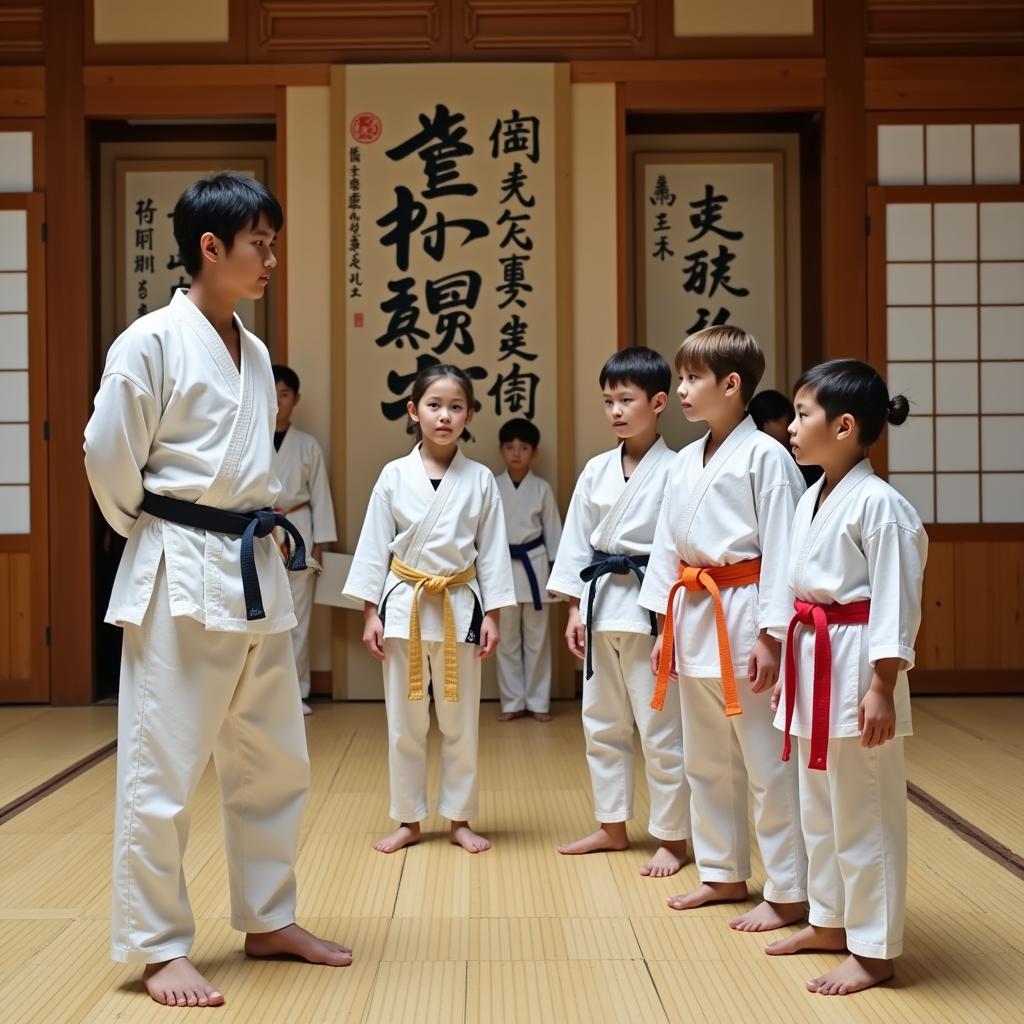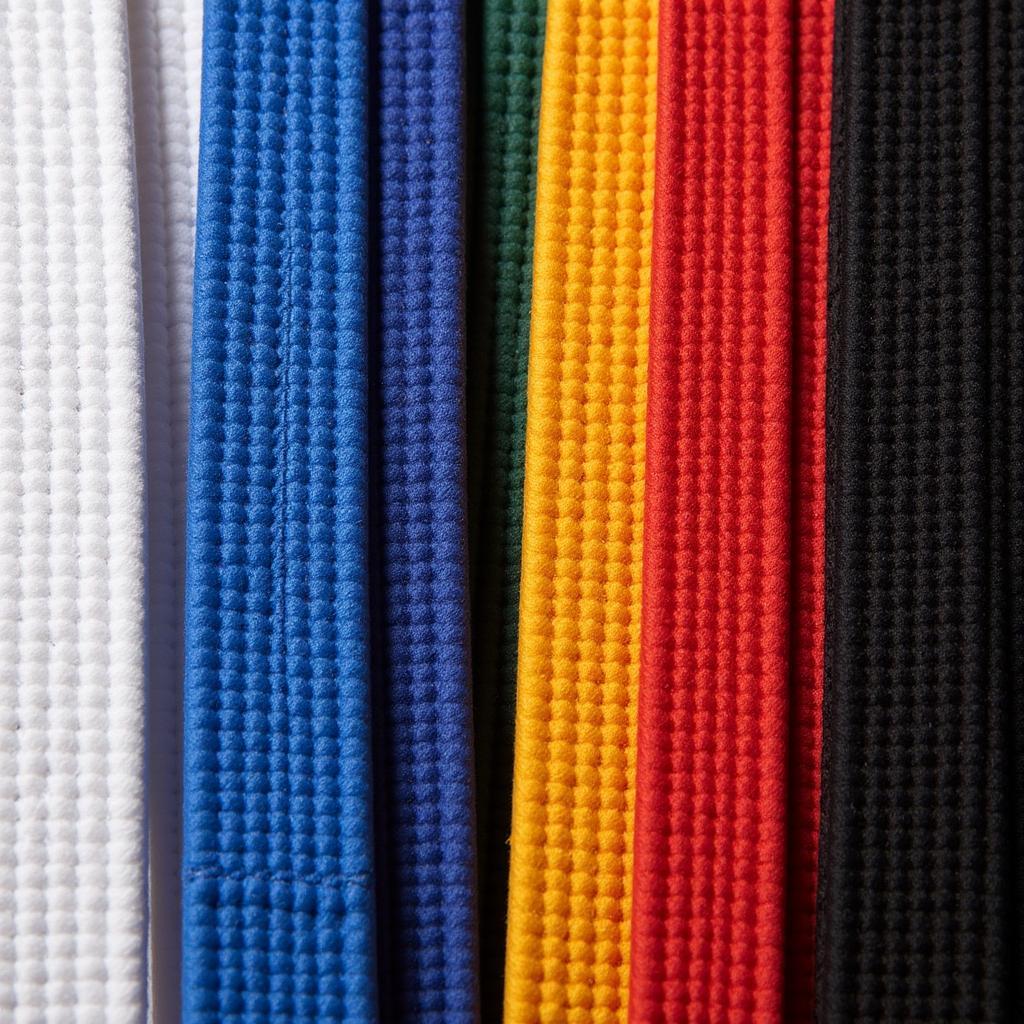Belt Display: Understanding Martial Arts Ranking
Belt displays are a fundamental aspect of martial arts, signifying rank, skill, and progress within a specific discipline. Understanding the meaning behind different belt colors and the display etiquette surrounding them is essential for any martial arts practitioner. This article explores the significance of belt displays in martial arts, providing insights into the history, traditions, and practical considerations involved. Let’s delve into the world of martial arts belts and uncover their hidden meanings.
A martial art’s belt system acts as a visual representation of a practitioner’s journey. From the novice white belt to the coveted black belt and beyond, each color represents a stage of development, reflecting increasing proficiency and understanding of the art. But it’s not just about the color; the way a belt is worn and displayed carries its own significance.
The History and Significance of Belt Displays
The concept of using colored belts to denote rank in martial arts is relatively modern. While some trace it back to Jigoro Kano, the founder of Judo, in the late 19th century, others point to the influence of early 20th-century systems. Regardless of the precise origin, the belt system has become ubiquitous, offering a tangible symbol of achievement and a source of motivation for practitioners.
The belt itself, often tied in a specific knot, represents the practitioner’s commitment to their training and their connection to their lineage. It is a symbol of respect for the art, the instructors, and fellow students. The act of tying the belt becomes a ritual, reinforcing the values of discipline, perseverance, and self-improvement.
 Martial Arts Belt Display Ceremony
Martial Arts Belt Display Ceremony
Different Belt Colors and Their Meanings
While the specific colors and their associated meanings can vary between martial arts styles, some common themes emerge. The white belt often represents purity and the beginning of the journey, while black signifies mastery and a deep understanding of the art. In between, colors like yellow, orange, green, blue, and brown represent progressive stages of development, each associated with specific skills and knowledge.
It’s important to note that the meaning of a particular belt color can be subjective and vary even within the same style. The emphasis should always be on the journey and the continual striving for improvement, rather than the belt itself. After all, the belt is merely a symbol, not the art itself.
Etiquette of Belt Display
Proper belt display is crucial in showing respect for the art and its traditions. This includes how the belt is tied, how it is worn, and how it is treated. A loosely tied or frayed belt can be seen as a sign of disrespect, while a neatly tied and well-maintained belt reflects pride and discipline.
 Martial Arts Belts of Different Colors
Martial Arts Belts of Different Colors
How to Tie Your Belt Correctly
Most martial arts styles have specific methods for tying the belt, often involving a particular knot or sequence of folds. Learning the correct method is an important part of training and demonstrates attention to detail.
Maintaining Your Belt
Keeping your belt clean and in good condition is a sign of respect. This includes avoiding unnecessary wear and tear, cleaning it regularly, and replacing it when it becomes excessively worn or damaged.
Belt Display in Competitions and Demonstrations
Belt displays are particularly important in competitions and demonstrations. They provide a clear visual indicator of a practitioner’s rank and experience, allowing judges and spectators to understand the context of their performance. In competitions, belts can also be used to group competitors of similar skill levels, ensuring fair and challenging matches.
martial arts medals can also signify achievement in competitions.
Beyond the Black Belt
While achieving a black belt is a significant milestone, it is often seen as the beginning of a new phase of learning. In many styles, there are further ranks beyond the black belt, represented by stripes or different colored belts. These advanced ranks signify continued dedication and a deeper exploration of the art. The pursuit of mastery is a lifelong journey, and the belt system provides a framework for continued growth and development.
martial arts patch can be a great way to personalize your uniform and show pride in your school or team.
Conclusion: The Belt as a Symbol of Progress
The belt display in martial arts is more than just a fashion statement; it’s a powerful symbol of dedication, perseverance, and progress within a chosen discipline. By understanding the history, significance, and etiquette surrounding belt displays, martial artists can deepen their appreciation for the art and their commitment to the journey of self-improvement. Embrace the belt as a reminder of your progress and a symbol of your ongoing commitment to the martial arts.
FAQ
- What is the significance of the white belt? It signifies the beginning of the journey and a state of openness to learning.
- How often should I replace my belt? When it becomes excessively worn or damaged.
- Does the meaning of belt colors vary between styles? Yes, the specific colors and their associated meanings can differ.
- What is the proper etiquette for displaying my belt? It should be tied neatly and worn with respect.
- Is achieving a black belt the end of the journey? No, it is often seen as the beginning of a new phase of learning.
- What are the ranks beyond black belt? They vary between styles but often involve stripes or different colored belts.
- How can I learn the correct way to tie my belt? Ask your instructor to demonstrate the specific method for your style.
Do you have any further questions about martial arts belt displays or other related topics? We encourage you to explore other articles on our website, such as our guide to martial arts medals and patches. For personalized assistance, our team is available 24/7. Contact us at 02462573573, email us at danteum@gmail.com, or visit us at Savico Megamall, 7-9 Đ. Nguyễn Văn Linh, Gia Thụy, Long Biên, Hà Nội 10000, Việt Nam.


